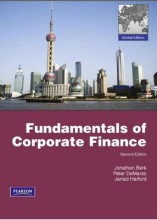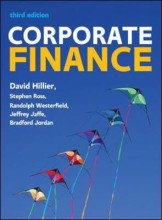Summary: Organisational Theory
- This + 400k other summaries
- A unique study and practice tool
- Never study anything twice again
- Get the grades you hope for
- 100% sure, 100% understanding
Read the summary and the most important questions on Organisational theory
-
1 An overview
This is a preview. There are 16 more flashcards available for chapter 1
Show more cards here -
two forces that characterise systems
1. differentiation
2. integration -
Life cycle of an organisation
1. Entrepreneurial stage
2. Collectivity stage
3. formalisation-and-control stage
4. elaboration-of-structure stage
5. decline stage -
2 The evolution of organisation theory
This is a preview. There are 20 more flashcards available for chapter 2
Show more cards here -
Division of labour (18th century)
Functional specialisation: the breaking down of tasks into simple components, which can be undertaken on a repetitive bars by specialists. -
2 underlying dimensions in the evolution of organisation theory
1. organisations are systems
2. The ends of organisation structure
- rational perspective: effectively achieving objectives
- social perspective; result of conflicting interests of organisations participants -
Which other industrial innovations developed in the 19th century?
- mass production -> modern industrial structure, arranged line and staff management
- railways -> timetables, schedules, clear line of authority and workforce culture -
2 different approaches to study organisations (1950-1970)
1. populist approaches; humour and mockery to draw attention
2. academic approach; specific underlying themes which lack general appeal and require more knowledge to interpet -
5 popular management writers
1. Tom Peters; organisations need to improve communications, become more innovative and respond to environmental changes quicker.
2. Charles Handy; Stress innovation and flexibility and adds the human side of people liking to work
3. Ricardo Semler; Decision-making tasks may be undertaken at a lower level
4. Michael Hammer; re-engineering suggests to build the organisation structure around multidisciplinary processes -> self-contained tasks
5. Jack Welch; reducing number of layers and employees, decentralised decision-making, quality of management is most valuable asset -
4 Organisation Structure Dimensions
This is a preview. There are 10 more flashcards available for chapter 4
Show more cards here -
5 basic configurations of organisations (mintzberg)
1. simple structure; highly centralised, low formalisation
2. machine bureaucracy; formalisation, standardisation of processes and practises
3. divisional structure: decentralised, product diversity and spatial dispersion
4. professional bureaucracy: high formalisation and decentralisation
5. adhocracy; high levels of coordination, low formalisation -
5 Strategy
This is a preview. There are 12 more flashcards available for chapter 5
Show more cards here -
Two approaches as how to an organisation determines its strategy
1. planing mode: strategy as outcome of a rational deliberation process
2. evolutionary mode: strategy as emerging from minor incremental decisions -
4 category strategy-structure typology (Miles and Snow)
1. Defenders; organisations whose strategy is to produce a limited set of products directed at a narrow segment of the total potential market (aggressive pricing)
2. Prospectors; organisations whose strategy is to find and exploit new product and market opportunities. (innovation)
3. Analysers; organisations whose strategy is to move into new products or markets only after their viability has been proven (minimise risks)
4. Reactors; a residual strategy that describes organisations that follow inconsistent and unstable patterns.
- Higher grades + faster learning
- Never study anything twice
- 100% sure, 100% understanding































